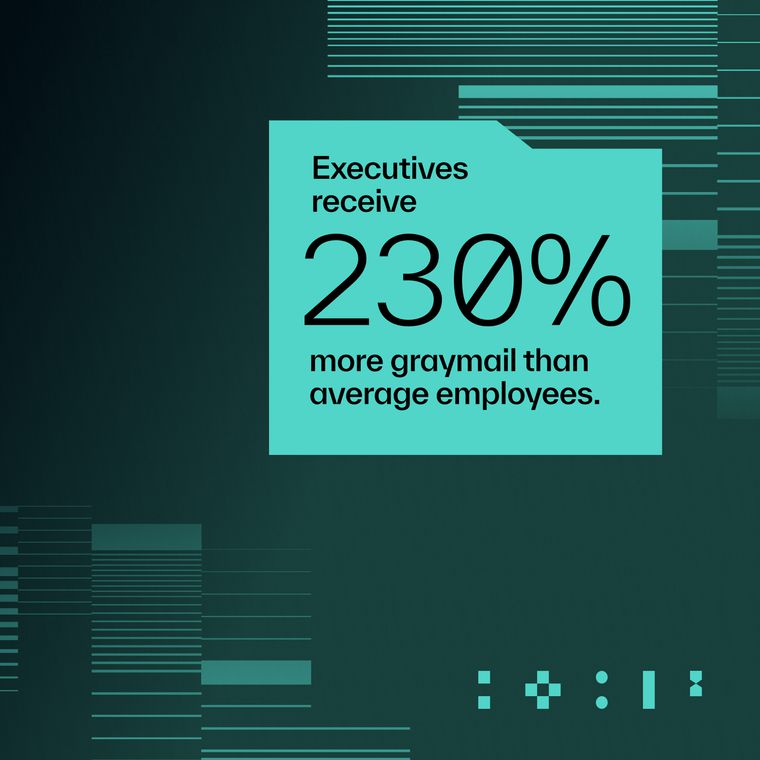Phishing Email Indicators Every Security Team Should Monitor
Monitor these key phishing email indicators to catch sophisticated threats that bypass traditional filters.
August 7, 2025
Modern phishing attacks have evolved far beyond crude scams, now mimicking legitimate business communications with sophisticated precision. Today's threat actors craft messages with authentic branding, credible sender identities, and contextually relevant content that systematically bypasses traditional email security filters.
These advanced campaigns exploit human psychology rather than technical vulnerabilities, making them virtually undetectable to conventional signature-based defenses. Traditional detection methods that flag suspicious domains, keywords, or known threats prove insufficient against attackers who deliberately design campaigns to evade these established security measures.
Organizations need to shift from reactive detection to proactive behavioral analysis. This framework identifies seven critical indicators that reveal the subtle patterns distinguishing sophisticated phishing attempts from legitimate communications, enabling security teams to detect advanced threats that conventional systems miss.
Why Traditional Detection Methods Miss Modern Phishing
Legacy email filters rely on known indicators, signatures, blocklists, and heuristics to stop threats. But modern phishing tactics easily bypass these static defenses.
Attackers now use tactics like short-lived phishing sites, personalized content, and domain-shadowing to evade detection. Their emails often appear routine, free of typos, and use trusted cloud services to conceal malicious intent.
Without behavioral context such as who sends what, when, and how, traditional systems can’t assess intent or flag novel attacks. Generative AI further complicates detection by crafting highly tailored, rule-defeating messages. To keep up, security teams need behavioral monitoring that tracks identity, context, and anomalies.
Here are seven key phishing indicators to watch:
1. Email Address & Display Name Mismatches
Attackers often exploit the disconnect between display names and email addresses to impersonate trusted contacts. While the display name appears familiar to users, the actual email address may be fraudulent, making this a reliable signal of phishing.
Common tactics include internal look-alike domains (e.g., “finance-team@company-support.com”), executive impersonation using personal email accounts, and domain obfuscation through subdomains or Unicode characters.
A typical attempt might look like:
"CFO John Smith" john-smith.finance@outlook.com
“Please wire $95,000 by 5 p.m.”
Detection requires combining SPF, DKIM, and DMARC checks with display name filtering. Cross-reference senders against known address-name pairs and quarantine mismatches. Ongoing monitoring of these signals helps block impersonation before it reaches users.
2. Unusual Communication Patterns
Baseline communication data makes anomalies easy to spot, and those anomalies often expose phishing that slips past technical controls. In healthy mail flow, senders, subjects, tone, and timing stay remarkably consistent like product teams talk to vendors during business hours, finance staff approve invoices on predictable cycles, and executives use established signatures.
User and Entity Behavior Analytics (UEBA) compares each new message against months of history, flagging outliers such as sudden tone shifts, unexpected recipient lists, or requests sent at 2 a.m. from unfamiliar devices. Linguistic clues like inconsistent greetings, abrupt authority cues, or urgent language raise suspicion, while technical context like unusual email routing confirms threats.
Machine-learning models correlate these signals across every mailbox to identify automated social-engineering campaigns and quarantine them before users click. This behavioral approach becomes especially important when detecting the next indicator.
3. Urgency and Time-Pressure Tactics
Phishing emails often rely on urgency to prompt quick, emotional responses. Phrases like “immediate action required” or “respond within 24 hours” are designed to exploit fear, scarcity, and authority, which are commonly used techniques in social engineering.
Detection systems convert these cues into data by analyzing patterns of pressure language across messages. Machine learning models trained on urgency-related terms can recognize clusters of suspicious content, especially when tied to financial requests.
Monitoring for spikes in time-sensitive language from a single sender enables security tools to quarantine high-risk emails and escalate alerts to the SOC before users make rushed decisions.
4. Financial and Sensitive-Request Patterns
Business Email Compromise attacks target financial processes through sophisticated social engineering that exploits organizational trust and established relationships. High-risk patterns include vendor payment redirections targeting accounting teams, credential harvesting attempts requesting login information or system access, information gathering through seemingly innocent requests building attack profiles, and authorization bypass attempts circumventing normal approval processes.
Modern email analysis tools flag phrases like "urgent payment" or "update bank details" while detecting anomalies in transaction patterns. Natural Language Processing adds interpretation of intent behind financial language to spot suspicious requests. Strong mitigation includes enforcing dual authorization, out-of-band verification, and automatic quarantines for emails with sensitive terms, creating layered defenses against email-based financial fraud.
5. Cross-Organizational Distribution Anomalies
Attackers use broad distribution tactics that individual inbox monitoring fails to catch through two common strategies:
Spray-and-Pray Attacks: These campaigns blast identical emails to hundreds of recipients simultaneously, sharing the same subject lines, URLs, and send times while slipping past filters that evaluate messages individually. Cross-tenant correlation reveals mass-distribution patterns that traditional detection tools miss.
Laddering Attacks: These staged attacks target lower-level employees first, then escalate to executives, building credibility at each step. Cross-tenant behavioral analysis detects these progressions by mapping sender-recipient relationships and identifying statistically rare communication paths.
These attacks create detectable patterns through identical content and synchronized timing. Integrating behavioral signals into SIEM platforms transforms scattered indicators into actionable intelligence, enabling tenant-wide threat detection and automated quarantine.
6. Content and Context Anomalies
Content and context anomalies expose attacks when the message's subject, tone, or expertise conflicts with the sender's known role. Modern campaigns use generative AI to craft flawless grammar, eliminating the telltale errors you once trusted.
Detect Mismatched Language and Topics
Focus on whether the request aligns with the sender's real-world responsibilities. A shipping inquiry from human resources or a firewall upgrade note from payroll should trigger scrutiny. Remember the fact that cyber attackers use generic greetings and urgency phrases that work across audiences.
Automated defenses surface these mismatches by pairing natural-language processing with directory data: if the text mentions "invoice wiring" yet the sender is classified as marketing, flag the message. Large language models score tone against a user's historical emails while routing data validates legitimacy.
Monitoring how well an email's content matches the sender's identity and automating that comparison at scale uncovers sophisticated attacks that slip past syntax filters and signature checks.
7. Technical Infrastructure Red Flags
Technical infrastructure analysis provides concrete evidence of malicious intent through examining email delivery mechanisms and routing patterns. Critical red flags include API integration anomalies showing unusual endpoint usage or authentication methods, authentication failures in SPF, DKIM, and DMARC validation, routing irregularities with messages taking unusual internet paths, and platform exploitation abusing legitimate services for malicious purposes.
URL obfuscation employs multiple redirection layers, encoding techniques, and legitimate service abuse to disguise destinations. Security platforms must automatically trace complete redirect chains and resolve final destinations before allowing delivery. Comprehensive monitoring requires dynamic threat intelligence feeds updated every few minutes to catch domains registered within hours of attack campaigns.
Email Routing Pattern Analysis
Legitimate corporate emails follow standard routing patterns, while attacks use multiple international relays to hide origins. Here’s how you can analyze them:
Check "Received" headers for unusual geographic sequences or excessive hops indicating message laundering.
Send enriched header data to SIEM systems for correlation and automated blocking.
Validate anchor text against actual link destinations mismatched links like "View Invoice" pointing to unrelated domains signal deception.
Implement real-time validation comparing anchor context with resolved URLs.
Quarantine messages with two or more infrastructure anomalies before user delivery.
These technical indicators require integration into comprehensive monitoring workflows for maximum effectiveness.
Building Effective Monitoring Workflows
Effective monitoring workflows process messages through three critical stages: normalization, behavioral scoring, and automated escalation.
Here are the details of each:
Normalize and Ingest Messages: Pull raw data from all communication channels into a single processing queue. Convert headers, content, and attachments into a consistent schema for reliable downstream analytics. Enrich records with authentication results (SPF, DKIM, DMARC) while centralizing processing to strip attacker formatting tricks.
Score Behavior and Detect Anomalies: Apply layered analytics combining heuristics, machine-learning models, and directory lookups. Flag obvious red flags while ML models compare against learned baselines for sender identity, tone, and request patterns. Risk scores correlate with sender reputation, urgency, and financial-request indicators.
Escalate, Tune, and Verify: Route high-risk messages to automated workflows that open tickets and prompt verification. SOC analysts review evidence and launch containment if needed. Continuous feedback from analyst decisions and user reports refines rulesets, maintaining detection fidelity while minimizing false positives.
Integrating User Reports with Technical Monitoring
User-reported phishing plays a crucial role in identifying sophisticated threats that slip past automated filters. A one-click phishing button within email clients allows users to forward suspicious messages, with full headers, directly to the SOC for immediate review.
This integration creates a continuous feedback loop. Security teams can automatically classify reports, initiate analysis, and update detection models. Quick, clear responses to users reinforce participation and help fine-tune threat identification while reducing future dwell time.
Use these real incidents in micro-training sessions to deepen awareness. Context-rich examples are far more effective than generic scenarios. At the same time, automation can handle safe and spam reports, easing the triage burden on analysts.
This combination of technical monitoring and user input enhances email security through continuous learning, improved accuracy, and efficient workload management.
Measuring Detection Effectiveness
Effective detection requires tracking four core metrics that reveal whether your controls actually reduce risk. These measurements provide concrete feedback on program performance and highlight areas for improvement.
Key Performance Indicators:
Time to Detection and Remediation - How quickly you spot and neutralize threats after delivery
False-Positive and False-Negative Rates - The ratio of benign messages blocked versus malicious messages missed
User-Reported Accuracy - The percentage of employee reports that correlate to verified attacks
Financial Impact Avoidance - The dollar value of prevented fraud or recovery costs
Run post-mortems after every incident. Examine gaps, refine rules, adjust thresholds. Watch the trend lines, falling dwell time, and flat fraud losses signal victory. Rising numbers demand immediate action.
Regular measurement transforms static defenses into adaptive systems that evolve with threats. Your metrics become early warning signals, revealing when controls lose effectiveness before attackers exploit the weakness.
The absence of attacks doesn't measure security success. It's proven by the swift, accurate neutralization of threats before they achieve their objectives.
Enhancing Monitoring Capabilities with Abnormal Security
Abnormal strengthens monitoring by applying behavioral AI to seven key indicators, enabling more precise, intent-driven detection while reducing alert fatigue. Rather than flooding teams with volume-based alerts, the platform surfaces only those threats that diverge meaningfully from established behavioral norms.
Through a read-only API connection to Microsoft 365 or Google Workspace, Abnormal begins analyzing email traffic within minutes, without requiring MX changes or proxy configurations. It builds dynamic baselines by examining sender identity, writing patterns, typical recipients, and geographic routing.
Natural language processing evaluates content for financial requests, urgency signals, and display name mismatches, combining these with device and location telemetry to assign a unified risk score. The same behavioral foundation extends to Slack and Teams, offering visibility across communication channels without added policy complexity.
Abnormal’s low false-positive rate supports confident integration into existing SOAR workflows and SIEM dashboards, streamlining investigations and reducing manual triage.
To see how Abnormal’s behavioral analytics can fit into your monitoring strategy and reduce alert noise, request a personalized demo.
Related Posts
Get the Latest Email Security Insights
Subscribe to our newsletter to receive updates on the latest attacks and new trends in the email threat landscape.


